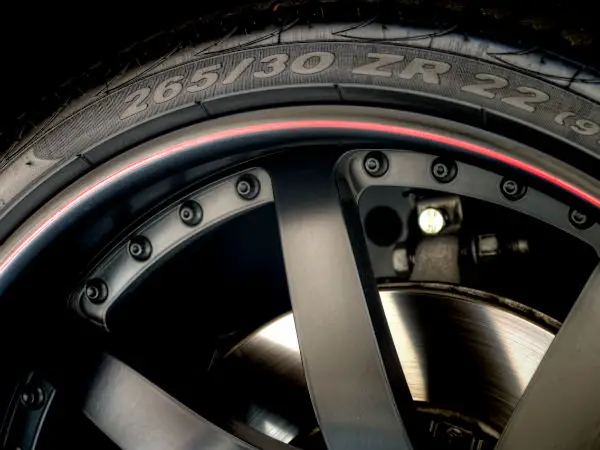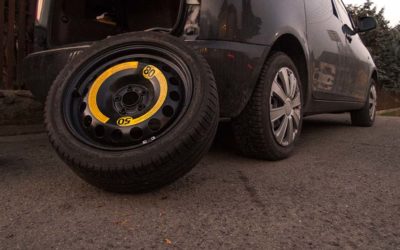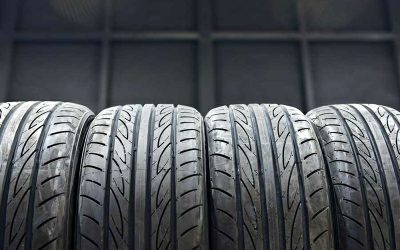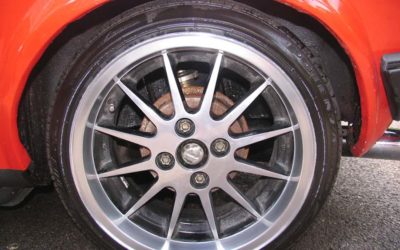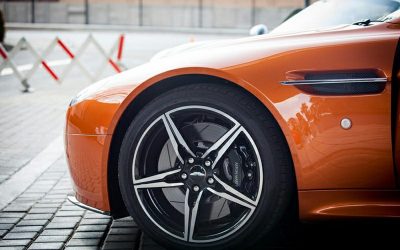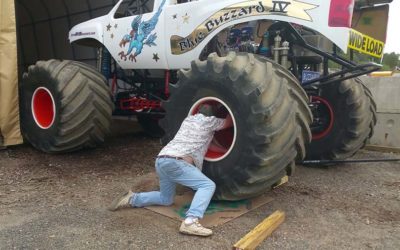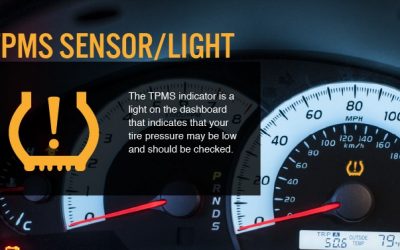Being a popular tire in sports cars, low-profile tires are equipped for vehicles with high-performance requirements. So what are the pros and cons of this tire? How does it work? Let’s discover.
What Are Low Profile Tires?
Low-profile tires are well-known for racers in sports vehicles to increase stability, speed, and appearance while driving. They have a smaller, stronger sidewall, which is also broader than a regular tire.
Each tire has a number designation branded on the side representing the tire’s aspect ratio. For example, ‘205/45-R16′ indicates that the height equals 45% of the length. The aspect ratio is proportional to the frame. Normally, if this aspect ratio is less than ’50,’ the tire is deemed as low-profile.
Low Profile Tires Vs. Regular Tires
Sidewall Height And Section Width
The most obvious difference is the ratio between the width and height of each type of tire. Traditional tires have a higher aspect ratio than low-profile tires. Due to the longer and higher sidewalls, conventional tires deliver better dry traction.
As mentioned in the description, the rim numbers indicate the rim size, starting with the letter “R”. The number on the back shows the tire’s height and width percentage.
Typical tires have a sidewall height of 50 or more. Its width has a larger cross-section than low-profile tires. Drivers can clarify tire features and qualities based on steering, wet traction, and braking performance.
Usage
Low profile tires are used in sports cars because the track rarely has rough and gravel roads, preventing the car’s suspension systems from being damaged. If its low profile is installed in a normal car, it will cause a lot of damage to your vehicle in terms of both appearance and internal structure.
In addition, they are designed to respond to such extreme braking and dry-road racing. The tire’s performance also helps the race cars conquer a small or large corner that racers want in a short amount of time.
The sidewalls of low profile type are stiffer and stronger than high profile ones, so their durability is also higher, withstanding strong impacts.
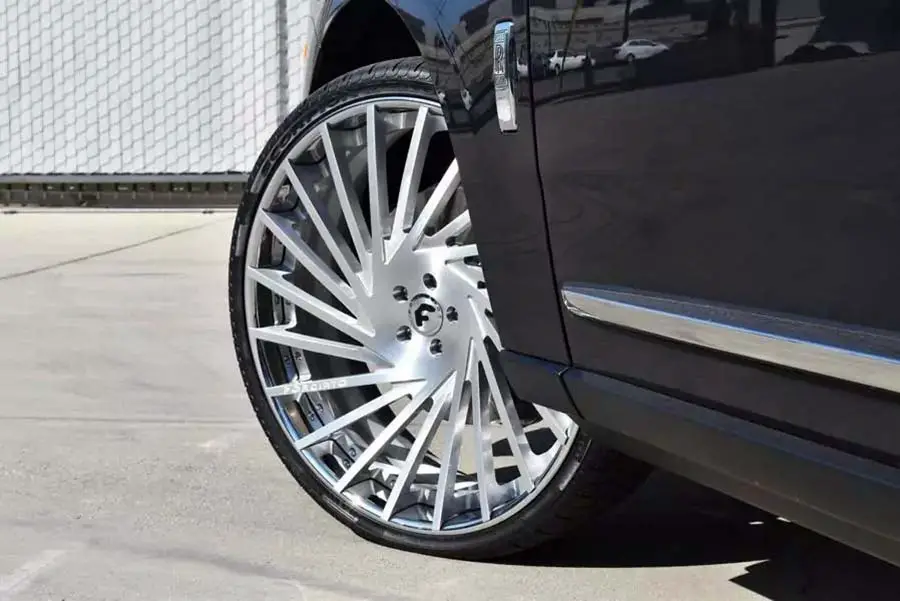
Pros And Cons Of Low Profile Tires
Pros
Improved Performance
Tire models with a wide tread block helps them balance the ability to grip the road, especially on bumpy roads compared to others. It will help riders feel more secure about drivability and traction, whether on dry surfaces or wet roads.
Besides, the hip is sturdy and firm, helping the larger wheel move more flexibly according to the driver’s requirements. Especially when entering a bend, the tires also support faster and more accurate cornering than conventional tires.
A low profile tire is designed with a wide rim, so the brake discs are also larger than usual.
This excellent feature helps shorten the braking distance to the maximum, especially when the vehicle travels at high speed. It helps control the speed rating and maintain the tire’s durability when braking.
Fuel Economy
Another benefit of using low profile tires is fuel efficiency. The characteristic of this tire is that it has a lower drag compared to other tires. It is supported by a simplified tread design and a shorter sidewall.
Tires with complex or stiff tread designs can consume up to 70% of gasoline fuel, which is why cars with off-road tires are always gas guzzlers. Besides, the tires are designed with fewer and simple tread patterns, so they do not affect rolling resistance much.
Normally, a low-profile tire costs 15 – 20% of gas consumption, while traditional tires account for between 35-40%. This consumption level is suitable for cars traveling on smooth surfaces such as highways or race tracks.
Better Appearance
The current trend is sports and luxury cars. It both shows the personality of the driver and attracts more eyes. More and more people favor low profile tires with their wider rim design and less “rubber”. Therefore, the design trend is increasingly towards low profile tires.
Manufacturers also follow this trend when allowing this tire configuration to be included in the Original Equipment list. They provide vehicle owners with specifications for replaceable parts, including low profile tires.
In this way, drivers or racers can easily find the right fit for their vehicle without worrying about poor performance due to wrong tire sizes and parameter incompatibility.
Improved Speed And Durability
Maximum width in the tire cross-section with high and stiffer sidewalls allows the car to run at a faster than normal speed. The driver can easily increase the speed to more than double the normal car and still control the vehicle pace.
The tire diameter is lower than that of other tires, which helps to increase the gear ratio. The higher the gear ratio, the faster the wheel spins, thereby increasing the vehicle’s speed. Besides, the distance the car can travel at high speed is also longer.
Cons
Rougher Ride
These tires only give you a smooth ride on highways or off-road tracks. The low profile design makes the space of the rims and the bottom surface significantly narrower. It will not be able to withstand the shocks coming from bumpier ride and rough roads, thereby cannot meet the ride comfort requirements for drivers.
Besides, the car’s suspension system is also susceptible to damage due to frequent collisions. It will fail even faster if the frequency and strength of the impact increase over time.
The wheel’s rim is also at risk of being bent, causing the tire’s performance to deteriorate. It is because the wheel rims are dented every time they hit a pothole.
Rapid Deflation
It is clear that the amount of air present in low profile tires is less than in other ones.
Therefore, they will be easy to deflate in a short time because the amount of air is not enough to hold the tire when going through bumpy roads. In these cases, you need to inflate your tires immediately to avoid further damage to your wheels.
Besides, low profile tires are often produced with less rubber to match the trend, making their profile thinner.
If hitting sharp and hard objects on the road, the tire will likely be scratched and quickly deflated because after a period of larger contact with the uneven surfaces, these scratches will become holes in the tire.
Shorter Tread Life’s Longevity
Due to their low profile, the tires are manufactured with softer compounds and a waterproof cover for extra grip. However, rubber produced in this way will quickly wear out.
In addition, tires wear quickly or slowly depending on the driver and the terrain. If you corner at high speed or brake suddenly, the tires will experience a lot of friction, causing them to wear out faster.
If the weight on the vehicle is too heavy or heavier than the allowable weight, the tires will be under great pressure, and the high pressure in the tires will cause the tires to stretch and wear faster.
More Tire Noise
The noise caused by the tire mainly originates from the tire’s grooves due to the air passage. In addition, if the tire is under high pressure and the wheel response is continuous for high-speed turns, the sound will be louder.
The low profile of the tires also contributes to this noise, especially on uneven roads.
Especially when braking or cornering sharply, the tire’s strong friction with the road conditions will cause certain noises.
FAQs
Are Low Profile Tires Good In Snow And Rain?
Depending on the tire type, it may handle snow and rain conditions. Generally, there are 4 types, which include all-season tires, winter tires, summer tires, and touring tires.
The deep grooves and treads of all-season and winter tires provide remarkable traction on a snowy road or wet road.
What To Consider When Using A Low Profile Tire?
As a tire for sports cars, low profile tires feature a popular design, supporting vehicles at high speeds. Besides, the side walls of the car are also thinner than conventional tires, which means it is reinforced with stronger materials.
The point to note when using this tire is that it should not put pressure on it by suddenly exceeding the weight on the vehicle, braking, or cornering.
Also, depending on your personal preference, you can replace your tire with a low profile tire. Besides, you should carefully check the specifications to avoid incompatibility between the tire and the vehicle.
How To Ensure Proper Maintenance Of Low-Profile Tires?
You should drive cautiously and attentively when you desire to move at high speeds to avoid damage to internal construction. More importantly, keep the inflation pressure constant.
Overinflation will cause an unpleasant ride, while underinflation will lead to burning. Therefore, you should check the tire pressure at all times.
In addition, it’s recommended to take your car to the auto shop for regular tire maintenance. Inflating the tires and knowing the condition of the tires will help you know whether they are worn out and need a replacement.
Conclusion
Overall, the low profile tires are an amazing addition to sports cars. They are designed with low-rubber and narrower sidewalls to meet the fast speeds of racers.
Although its durability is not equal to other tires, its style and performance with wet road traction always bring a comfortable ride to the driver.

